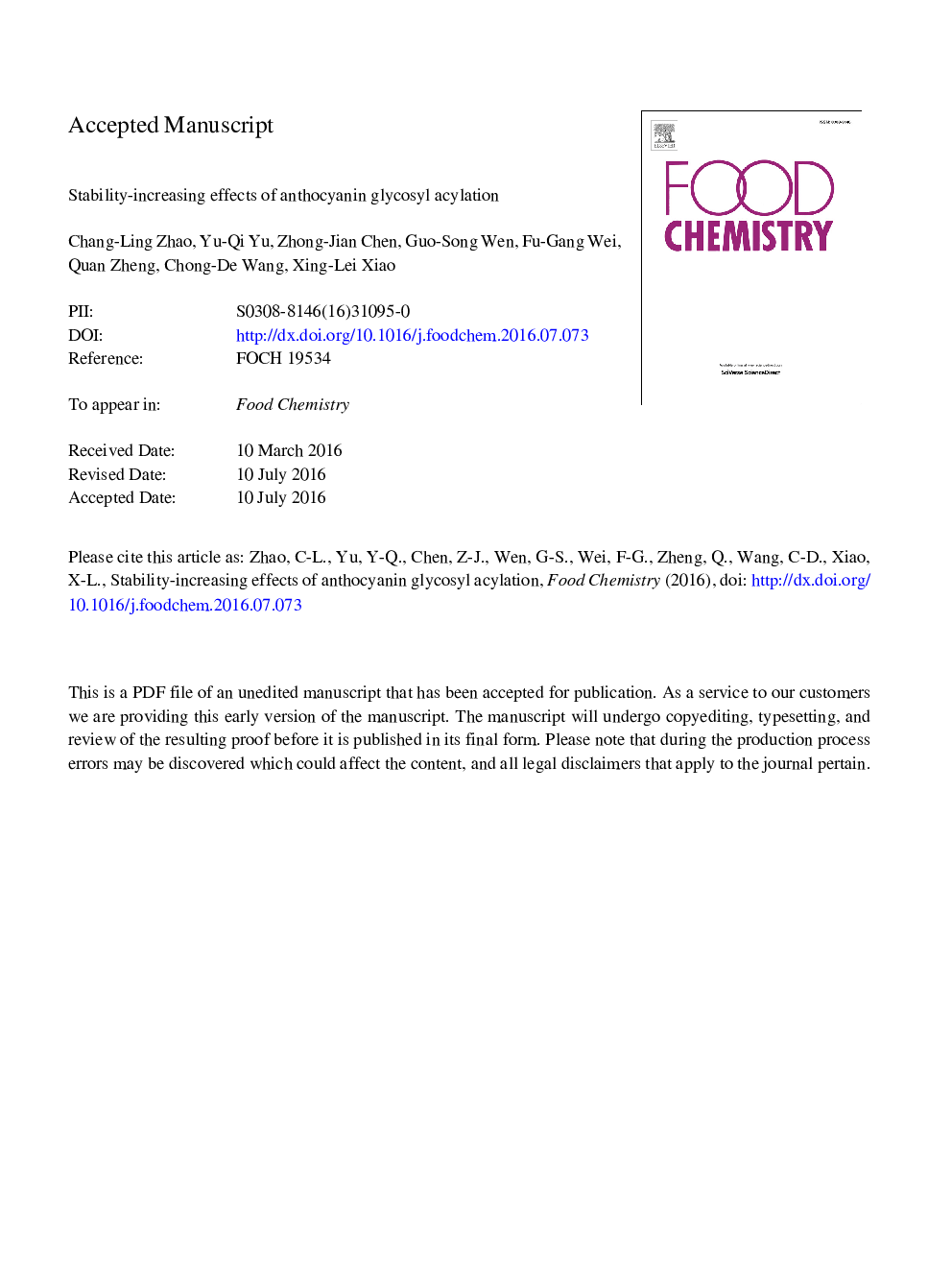| Article ID | Journal | Published Year | Pages | File Type |
|---|---|---|---|---|
| 7586858 | Food Chemistry | 2017 | 42 Pages |
Abstract
This review comprehensively summarizes the existing knowledge regarding the chemical implications of anthocyanin glycosyl acylation, the effects of acylation on the stability of acylated anthocyanins and the corresponding mechanisms. Anthocyanin glycosyl acylation commonly refers to the phenomenon in which the hydroxyl groups of anthocyanin glycosyls are esterified by aliphatic or aromatic acids, which is synthetically represented by the acylation sites as well as the types and numbers of acyl groups. Generally, glycosyl acylation increases the in vitro and in vivo chemical stability of acylated anthocyanins, and the mechanisms primarily involve physicochemical, stereochemical, photochemical, biochemical or environmental aspects under specific conditions. Additionally, the acylation sites as well as the types and numbers of acyl groups influence the stability of acylated anthocyanins to different degrees. This review could provide insight into the optimization of the stability of anthocyanins as well as the application of suitable anthocyanins in food, pharmaceutical and cosmetic industries.
Keywords
Related Topics
Physical Sciences and Engineering
Chemistry
Analytical Chemistry
Authors
Chang-Ling Zhao, Yu-Qi Yu, Zhong-Jian Chen, Guo-Song Wen, Fu-Gang Wei, Quan Zheng, Chong-De Wang, Xing-Lei Xiao,
